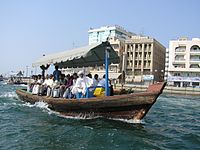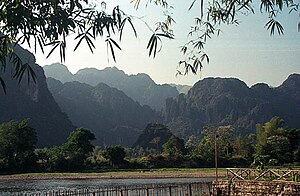This is part of a series of blog posts on tips for flyers.
Why might this post be useful to you?
Airline revenue management is the art of applying economic theory in setting fares. It is a very complex area. For flyers who wish to save money (isn't that all of us?) it is helpful to understand the basic concepts in order to find better prices. This post includes practical examples to illustrate the ideas.
But first a light introduction.
If airlines sold paint
Customer: Hi, how much is your paint?
Clerk: Well, sir, that all depends.
Customer: Depends on what?
Clerk: Actually, a lot of things.
Customer: How about giving me an average price?
Clerk: Wow, that's too hard a question. The lowest price is $9 a gallon, and we have 150 different prices up to $200 a gallon.
Customer: What's the difference in the paint?
Clerk: Oh, there isn't any difference, it's all the same paint.
Customer: Well, then, I'd like some of that $9 paint.
Clerk: First I need to ask you a few questions. When do you intend to use it?
Customer: I want to paint tomorrow, on my day off.
Clerk: Sir, the paint for tomorrow is $200 paint.
Customer: What? when would I have to paint in order to get $9 paint?
Clerk: That would be in three weeks, but you will also have to agree to start painting before Friday of that week and continue painting until at least Sunday
Customer: You've got to be kidding!
Clerk: Sir, we don't kid around here. Of course, I'll have to check to see if we have any of that paint available before I can sell it to you.
Customer: What do you mean check to see if you can sell it to me? You have shelves full of that stuff; I can see it right there.
Clerk: Just because you can see it doesn't mean that we have it. It may be the same paint, but we sell only a certain number of gallons on any given weekend. Oh, and by the way, the price just went up to $12.
Customer: You mean the price went up while we were talking?
Clerk: Yes sir. You see, we change prices and rules thousands of times a day, and since you haven't actually walked out of the store with your paint yet, we just decided to change. Unless you want the same thing to happen again, I would suggest you get on with your purchase. How many gallons do you want?
Customer: I don't know exactly. Maybe five gallons. Maybe I should buy six gallons just to make sure I have enough.
Clerk: Oh, no sir, you can't do that. If you buy the paint and then don't use it, you will be liable for penalties and possible confiscation of the paint you already have.
Customer: What?
Clerk: That's right. We can sell you enough paint to do your kitchen, bathroom, hall and north bedroom, but if you stop painting before you do the other bedroom, you will be in violation of our tariffs.
Customer: But what does it matter to you whether I use all of the paint? I already paid you for it!
Clerk: Sir, there's no point in getting upset; that's just the way it is. We make plans based upon the idea that you will use all of the paint, and when you don't, it just causes us all sorts of problems.
Customer: This is crazy! I suppose something terrible will happen if I don't keep painting until Sunday night?
Clerk: Yes sir, it will.
Customer: Well, that does it! I am going somewhere else to buy paint!
Clerk: That won't do you any good, sir. We all have the same rules. You might as well just buy it here, while the price is now $13.50.
Thanks for flying -- I mean painting -- with our airline.
Perishable Capacity
Once a flight takes off any empty seats represent lost opportunity for income for the airlines. That is why you sometimes get last minute bargains - any money is better than none for an empty seat.
However, in general, fares do not become cheaper closer to departure. This is because airlines know if they did then people would always hold off buying until the last minute (same thing happens on a larger scale with deflation in the economy). Airlines need to be reasonably certain in advance that a flight will generate a minimum level of income to cover most of their costs, and in order to make decisions on whether to operate or cancel flights, aircraft orders and positioning, staffing, etc.
Highly Generalised Pattern of Fares
As no-one wants to pay more than they have to, the general pattern of fares is cheap initially and gradually rising until departure. However this pattern is interrupted by sales, and does depend on the view of airline analysts as to how many more seats they will sell and at what prices. The analysts are continually updating their predictions and airlines may raise or lower fares as a result.
These forecasts also means some specific flights and/or dates may be cheaper than others. Flying at the start and end of a holiday weekend and the fares are normally higher because there is high demand. Similarly shorthaul flights at start and end of the typicall business day are pricier than in the middle of the day or evening. Longhaul flights midweek may be cheaper than at weekends, to summer destinations cheaper in winter, and so on.
Maximise Revenue by Differentiation
Long words, but what it means is the airline tries to get the highest fare from each type of passenger.
A leisure passenger who plans their holiday a year in advance is typically price sensitive. In exchange for lower fares they need to pay well in advance, and the fares have conditions limiting flexibility. Some examples of constraints include being fully or partly non-refundable, high fees to make any changes, minimum stay and advance purchase requirements, and limited availability on flights especially closer to departure (more on this in another blog post) and direct routings.
On the other hand, a business traveller who needs to fly to a meeting arranged at the last minute is not very price sensitive. They may also be happy to pay more for some perks (such as onboard food and drink, more space to allow work or better sleep on longer flights, lounge access, availability on non-stop flights). Often they want or need flexibility (eg if the meeting end time changes they can change their flight back to suit). The fare that allows all this may cost 20 or more times the lowest fare paid on the same flights.
Airlines each create dozens of fares for every route each with different rules, availability and benefits, in order to increase their revenue.
Effect of Airline Competition
Most regular travellers know that competition brings cheaper prices. On US domestic markets an example is called "the Southwest effect". On routes where there are lots of options fares may be low (eg many Trans-Atlantic routes) and on routes where there are few options fares are generally higher (eg between USA and Australia or between Australia and South America). This also applies to sales - when one airline has a sale their competitors often follow suit.
Competition also applies more subtly. Take this example of indirect vs direct routing. For Germany to USA, British Airways is a competitor of Lufthansa. This means their fares on this route need to be no higher than Lufthansa's (and possibly lower to compensate for the time & hassle of transferring through London). The fares from Germany to USA may be lower, or not much more than, the fares from UK to USA even though they are for the same Trans-Atlantic flight.
Incidentally, this is why the US-EU Open Skies agreement was such a big deal. It allows airlines to compete head to head on nonstop routes which in theory allows them to sell more higher revenue fares in their home market (see also point of sale differences below).
Point of Sale Differences
Point of sale is where the fare is sold. Airlines don't like to sell all their seats to one market (for flights between UK and US, UK to US sold in UK is one market and US to UK sold in US is another) as this leaves them vulnerable to shocks (eg due to an exchange rate fall travel by UK individuals and business drops sharply) and it also increases the odds of having empty seats (see perishable capacity above).
On some routes, especially domestic, the fares may be similar sold from each end - the fare from A to B is the same as from B to A. On other routes considerable fare differences apply.
These fare differences may be due to differing levels of demand for the particular route and airline. For example between Singapore and Australia, due to home airline bias (travellers preference to fly their home airline), Qantas is usually cheaper from Singapore but Singapore Airlines is usually cheaper from Australia.
The fare difference can also be due to differing income levels. For example between Australia and New Zealand fares are lower sold in New Zealand than sold in Australia for the exact same flights. Likewise between USA and Indonesia flights are cheaper sold in Indonesia than sold in USA.
These point of sale differences can sometimes be so big as to generate savings even if you take extra flights to the cheaper origin. Eg from Australia it can be cheaper buying a separate ticket to New Zealand in order to buy ex-New Zealand (ex means from) to Asia or Europe.
Wrap Up
This post has touched on just a few of the basic concepts of airline revenue management. There are some tips here which can be used to find better fares. Some of the later posts in the Flyer Tips series (in particular ones on booking classes and availability) will use these concepts and some additional ones to provide further ways to save more. There is a lot more information on Flyer Talk, but this info is not easy to find.















 While these may show the seat layout, they generally do not provide much information on the best and worst seats, other than by location of emergency exit rows, toilets and galleys. Some airlines show the seat pitch, but many do not.
While these may show the seat layout, they generally do not provide much information on the best and worst seats, other than by location of emergency exit rows, toilets and galleys. Some airlines show the seat pitch, but many do not.
